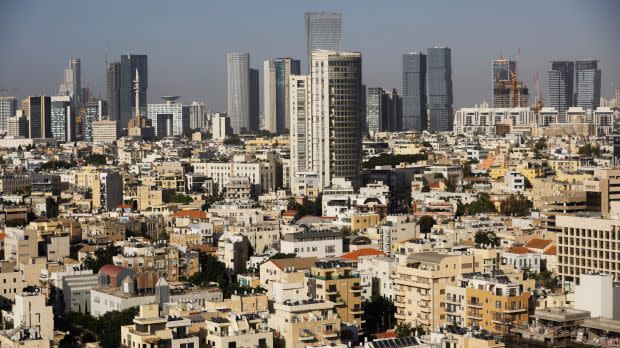How Tel Aviv got to be the world’s most expensive city

The world’s greatest metropolises are also, notoriously, the most expensive: Singapore, Paris, New York. But now, Tel Aviv is the priciest place to live.
The Israeli city recently made international headlines as the most expensive city in the world, according to a global ranking made by research organization the Economist Intelligence Unit. It was pushed to the top spot this year by a rapidly-appreciating national currency and supply chain upheavals that increased the price of goods and services.
Tel Aviv saw 2.2% price inflation in the past year and, more significantly, a fast appreciating currency that has put the price of many common goods and services among the highest in the world. The report, which builds a cost of living index across 173 cities, noted that Tel Aviv is now the second most expensive city for transportation costs, as well as the second most expensive for alcohol. In US dollars, an artisan hamburger in the city can set you back $18, a cocktail is $15 to $17, and a gallon of gas costs $5.78.
For city residents, this has meant a noticeable difference in the cost of everyday activities like going out for lunch. “It varies from place to place, but there are definitely restaurants where there’s more than a 10% increase for some meals,” says Danielle Bett, a communications director at a non-profit organization who lives in Tel Aviv. She also says that rising transportation costs often lead her to opt for the most economical option; she cycles and takes public transportation over driving or taxis.
Cities everywhere are becoming more expensive
The underlying factors that have driven up prices are not unique to Tel Aviv. Cities across the world have experienced particularly acute inflation, driven in large part by prolonged supply chain disruptions stemming from the pandemic. As shortages and skyrocketing freight costs make drive up costs for retailers, they pass them onto consumers in the form of price increases.
The report’s authors determined that across all 173 cities evaluated, the average local currency inflation rate from September to November of 2021 was 3.5%, the fastest recorded in five years. To understand the relative cost of living in each city, researchers found average prices for a basket of more than 200 goods and services, (but notably, not the cost of housing), and compared them to New York City as a baseline. Tel Aviv received an index score of 106, up six points from the baseline. Other cities in the ranking that saw big increases in the cost of living were Tehran, Iran (due in large part to the impact of international sanctions), Reykjavik, Iceland; Kyiv, Ukraine; Auckland, New Zealand; and Moscow, Russia.
“There’s a part of me that’s surprised that inflation wasn’t higher than it was,” says Ana Nichols, director of industry operations at the Economist Intelligence Unit who expects inflation to remain high even after it slows next year. Researchers are counting on supply chains to begin returning to normal and central banks begin to raise interest rates to combat inflation in the second half of 2022.
The high cost of living in Tel Aviv
In Tel Aviv, these recent changes come on top of an affordability crisis that has been going on for years—rising costs in housing, transportation, and everyday goods have worsened inequality and pushed people out of the city.
Much of this is thanks to the appreciation of Israel’s currency, the shekel. In November of 2021, the shekel reached $0.32, its highest valuation against the US dollar in more than two decades. Israel’s economy and currency were strengthened this year by a thriving tech industry that’s received increased foreign investment and a successful, early covid-19 vaccine rollout.
Of most concern, Bett says, is the cost of housing, which has been a point of contention in Tel Aviv for years. Across Israel, housing prices have nearly doubled in the past decade as more investors have entered the real estate market and the land available to build new housing has been limited. In Tel Aviv, this pace didn’t slow during the pandemic. Data from Israel’s Central Bureau of Statistics show that in the third quarter of 2020, average rents increased 3.3% from a year prior.
Housing costs have driven some young people out of the city to live in cheaper suburbs nearby. Unaffordability has also deepened inequality between wealthier residents on the northern side of the city, and those in the south, who tend to be lower-income and come from minority backgrounds.
Bett says she fears that these economic stresses could threaten the city’s fundamental identity as a diverse and welcoming place. “The thing that people love about Tel Aviv is how diverse it is and how young it is,” says Bett. “But the people who are most likely to suffer from poverty or social injustice are LGBTQ people and minorities. If those people can’t afford to live here anymore, it’s going to completely change the whole experience of the city.”
Sign up for the Quartz Daily Brief, our free daily newsletter with the world’s most important and interesting news.
More stories from Quartz:
India’s omicron cases show the variant was global even before the travel bans kicked in
The US Supreme Court is considering the economic impact of abortion
